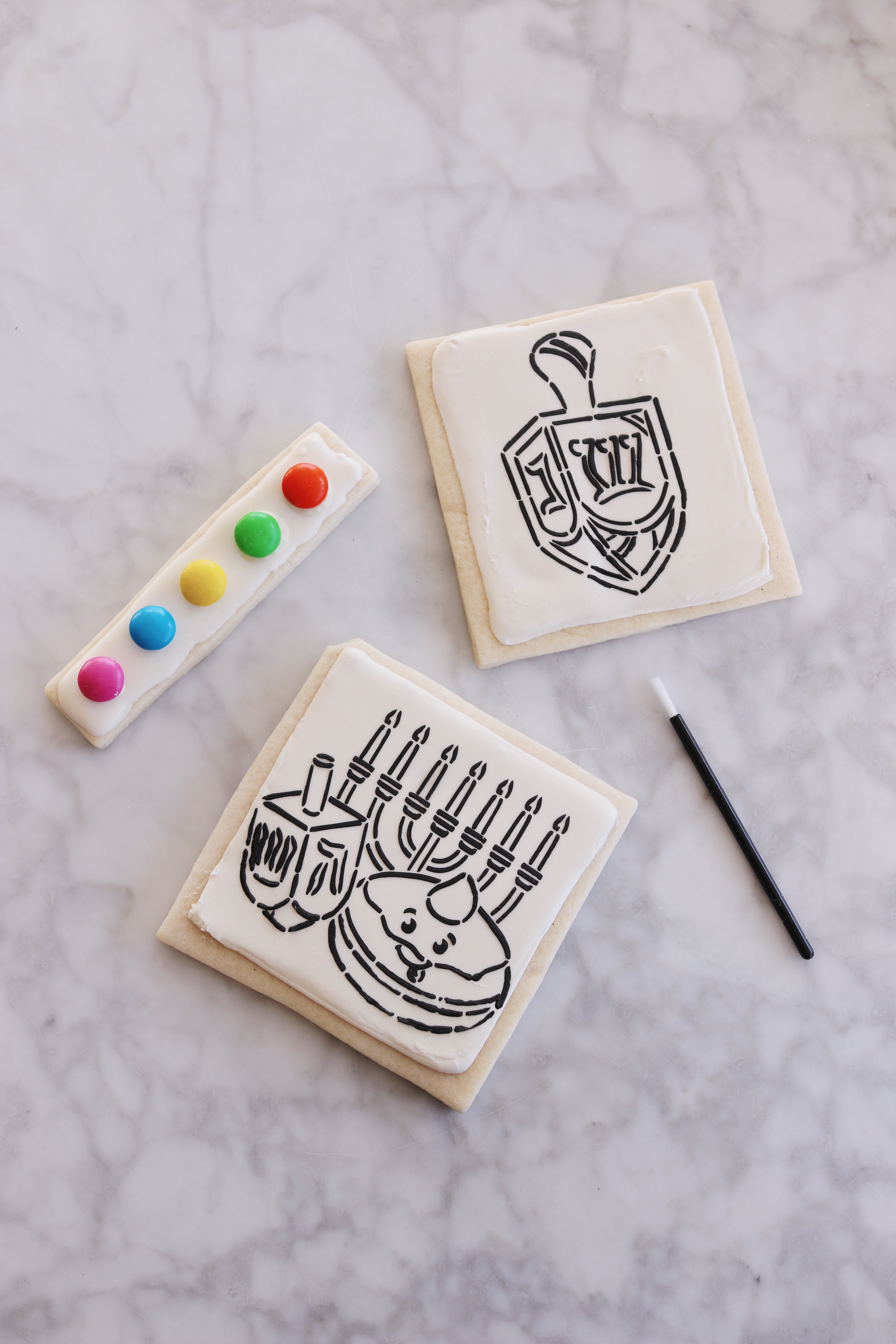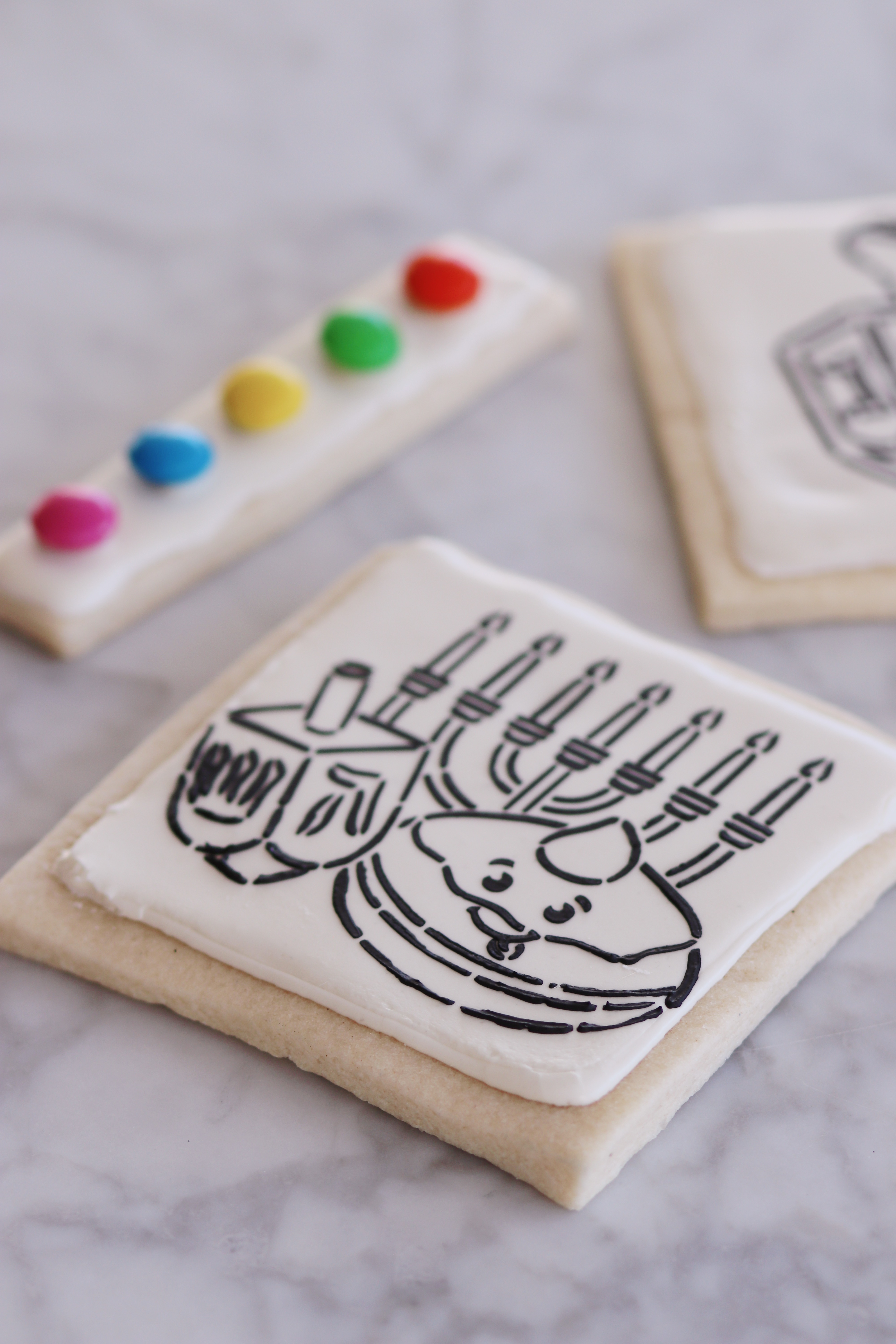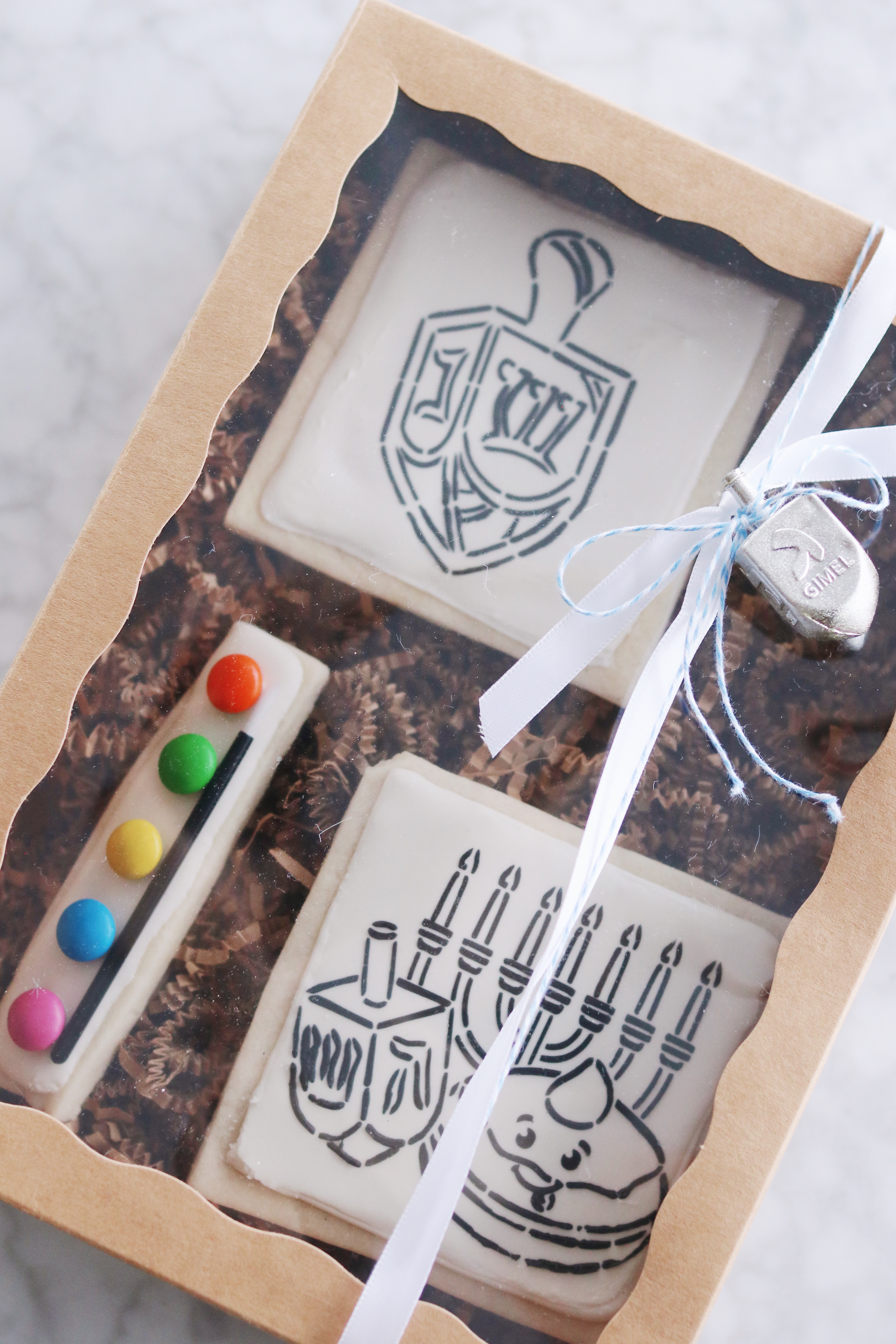Painting on cookies: easy and fun! Making paint-your-own cookies: …well. Yes fun. Not so much easy. But if you’ve got a few weeks to spare, a veritable warehouse in which to store all of the required supplies, and a trusted therapist on speed-dial, this is the project for you.
Just kidding. Let me try to sell this one a little better. It’s true that you’re bound to curse me at some point, or many points, throughout the process. But you will *also* thank me when you see the end result. It’s really, really fun to see these come to life—I actually gasped upon seeing the first (successful) stencil lift. Very cool.



The good news, at least, is that it’s likely to take you much less time than it took me, since I did quite a bit of troubleshooting along the way and have saved all of my most critical tips and tricks for you here. Scroll a bit to find those; scroll further for the full recipe. And note that as with all of the somewhat time-intensive projects I post here—and despite all of that fear-mongering silliness—it really is possible for anyone to make these. In the world of crafty baked goods, where there’s a will, there really is a way.
Without further ado:

My top tips for PYO cookies
- Make extras…of everything. Like, double the ingredients required for each step of the recipe (or triple ’em, depending on how uncertain you’re feeling). There’s a lot of room for error during each step of the process, so you might lose a few cookies along the way. It’d be a shame to make it all the way to the finish line with just one cookie “canvas” left with which to experiment, place the stencil on top, and accidentally smudge it with black food coloring.
- The consistency of the icing you use in the stencil step should be “toothpaste.” I definitely read this tip somewhere before my first attempt began, then promptly forgot about it and went for a “thick but not too thick” consistency that absolutely did not do the trick. You need it to be really thick; otherwise, it’ll seep through the stencil and produce thicker lines than you intended. For maximum control and precision, thicken it up. When in doubt, thicken it further.
- Allot about 3 to 4 days for the full process. Here’s the timeline I’d suggest:
- One day for making the dough and baking the cookies (not totally necessary for this one to be all on its own, actually, but I separated it out simply because it’s already a time-intensive step, and unless you want to spend your entire day baking and then icing cookies, you’re better off dividing the tasks).
- One day for icing the cookies—they need to set for at least 24 hours before you move onto the stenciling step, anyway.
- One day for assembling the palettes and stenciling the designs.
- Personally, I’d then wait another 24 hours to allow the black stencil lines to harden before placing in gift boxes or “painting” on the cookies—so that’d be a fourth day. But you could certainly just get that done a little later on the same day that you get the stenciling done.
The rest is a matter of trial, error, and more error. You’ve got this. Recipe below!
PrintHanukkah PYO (Paint-Your-Own) Cookies
Description
Cute stenciled cookies to give as gifts for Hanukkah. Here’s how to make them!
Ingredients
- One batch of chilled, rolled-out sugar cookie dough at 1/4″ thickness (I often use this recipe. Remember that you need to use a recipe for cut-out cookies—i.e. cookies that will cooperate with cutters and keep their shape during the baking process)
- 2 cups confectioners’ sugar, sifted (measure before sifting), plus another 1 cup (no need to sift) for later in the process
- 1.5 tablespoons meringue powder
- 4–5 tablespoons water
- Black gel food coloring
- M&Ms
Special equipment:
- Scissors
- Parchment paper
- Large baking sheet
- One set of cookie cutters that provide a large enough surface area to fit the stencils you choose
- Another set of cookie cutters for your “palette” cookies—I like the look of the thinner rectangles, but these can be any shape
- Cookie stencils (or similarly small stencils that will fit onto the “canvas” of your cookie); ideally, the designs you pick will be conducive to coloring in later—plenty of empty pockets and not too much detail—here’s one of my favorites that’s still available; I recommend searching Etsy for others!
- Flat-edge, semi-flexible icing scrapers
- A piping bag or MacGyvered plastic sandwich bag
- Miniature paintbrushes (available at some craft stores)
Instructions
- Make the cookies: Using your cookie cutters, cut out shapes in your prepared dough for both the “canvas” and “palette” cookies, as many as you’re able (you can re-roll and re-cut the scraps of dough). Place the dough shapes onto the parchment-lined baking sheet and into the fridge to chill for at least 15 minutes; meanwhile, preheat the oven; then, bake the cookies according to the recipe directions and let cool while you make the royal icing. (You can also refer to the sample timeline I created above and carry out each step of this process on separate days.)
- Ice the cookies: Pour the confectioners’ sugar, meringue powder, and water into the bowl of a stand mixer; beat the ingredients together on high speed for about a minute. The longer you beat it, the thicker the icing becomes. The trick to knowing if the icing is the right consistency is to lift up the whisk attachment and watch as the icing drips back into the bowl; if this happens in about five to ten seconds, it’s the right consistency. If it’s too thick (moving too slowly), you can add in more water, tablespoon by tablespoon. If it’s too thin, you can add in a little more confectioners’ sugar or simply beat it for a longer amount of time.
- Spoon the icing into a piping bag (or sandwich bag with a very small hole cut at one corner). Outline and flood each cookie with the white icing, then let them set for at least 24 hours before stenciling (you don’t want to accidentally puncture or otherwise damage the surface). On the rectangular “palette” cookies, add a selection of M&Ms in various colors, all in a straight line (in the video, I did this later in the process, but it’s easiest to just add them in right on top of the not-yet-dry royal icing). Let these dry, too, for at least 24 hours.
- Stencil the cookies: In a small bowl, vigorously mix together a small amount of black food coloring (about 1 teaspoon or less) with about 2 tablespoons of confectioner’s sugar, incorporating until you can’t see any lumps of sugar left. The consistency should resemble that of toothpaste. (It really needs to be very thick so as not to seep through the stencil and create unsightly/messy, extra-thick lines.)
- Place the stencil onto the cookie and adjust carefully until it’s exactly where you want it to be.
- Next, use a spoon to layer a small amount of the food coloring mixture onto the flat edge of your icing scraper.
- Hold the stencil down with one hand; use the other hand to press the icing scraper gently onto the top of the stencil, then pull down to cover all areas of the stencil. (As it is applied, the stickiness of the icing mixture itself will help to keep the stencil in place.) Don’t press too hard so as not to puncture the surface of the cookie icing.
- Carefully and in one motion, lift the stencil directly upwards to reveal the outlined design. Let sit for at least 24 hours before gifting or painting.
- Paint the cookies: When you or your gift recipient is ready to paint the cookies, dip the brush into some water, then use the candy coating on the palette cookie M&Ms as “paint.”

looks great ! Where can I find these Cookie stencils ?
just added still-available stencils to the supplies list! 🙂